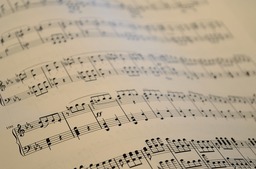Music theory

Here you will find modules that links to broadly defined theory of music. Subjects covered in this section are mainly focused on areas such as rhytmical division, musical scales, structure of chords, temepered systems, distances between notes (intervals), the rules of composition (clasical harmony or counterpoints) and explaination of various notes. To sum up - this section is mainly about sounds and music. Pieces of information collected in there are not conjoined with specified musical instruments so knowledge gathered there is genuinely universal.
Chord creator
The tool allows you to specify the name of the chord searching on the basis of these chord components. Notes can be entered by selecting it in the list of notes, fretboard or piano keyboard. You can also select the name of the chord from the list, and the program will display all its components and show them the diagram of fretboard or keyboard.
Music scales
Short review of various musical scales put into one table. You'll found some popular scales like standard major or minor here, but also more exotic ones like jewish scale or hungarian scale.
Chord decoder
Give chord name (eg. CMaj7) and you get back list of notes (intervals) played.
Note frequencies
Below table contains frequencies of musical notes in equal temperament system. Both basic tone and first few harmonics are presented.
Chords transposition
This tool allows to transpone chord progression from one tonation to another. Simply enter your original chords, select number of semitones to shift and you'll get chords in target tonation.
Music intervals
Below is a table of basic musical intervals. In addition to the name of the interval and the number of halftones you will find a short name and an example built on C note. After that, intervals are grouped into perfect consonances, imperfect consonances and dissonances.